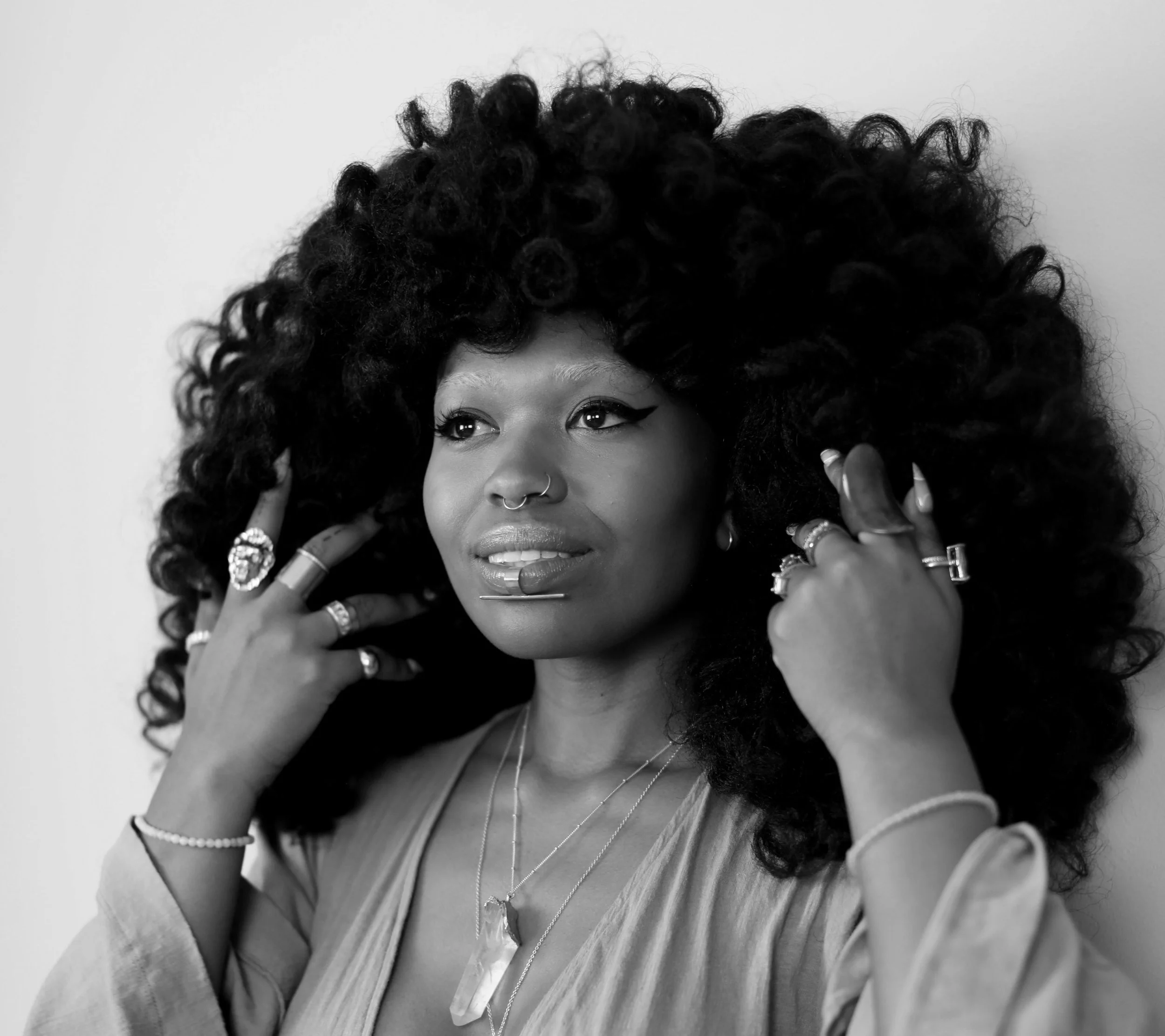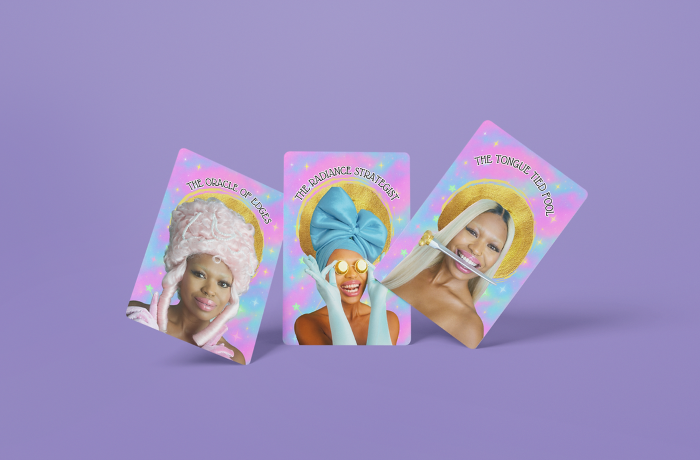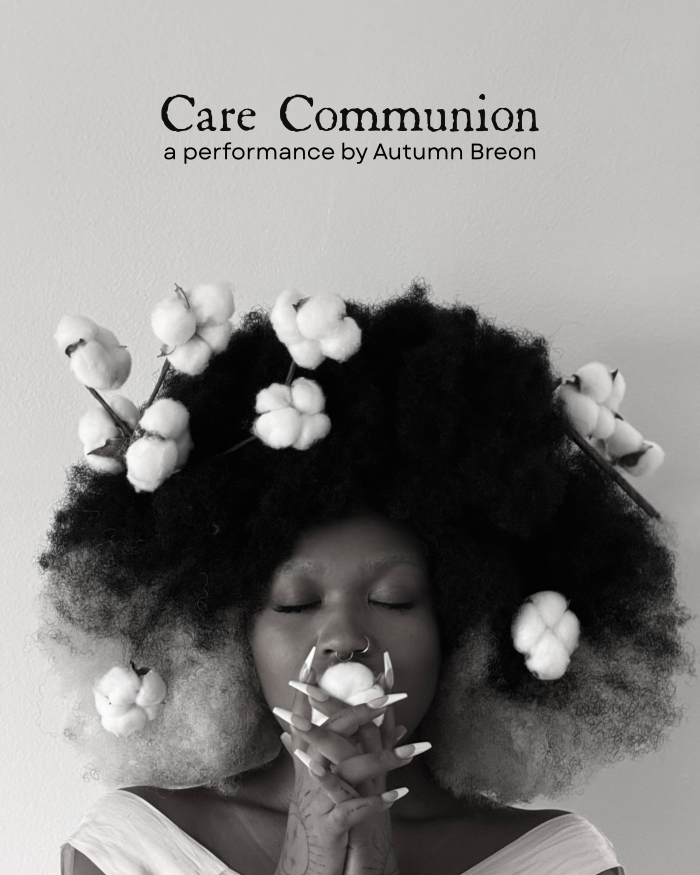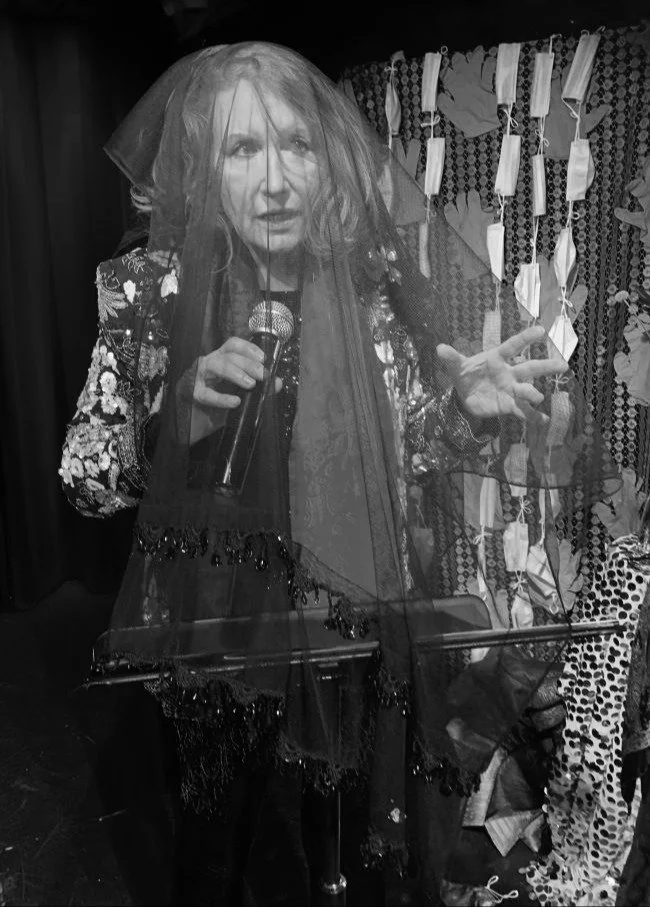Multidisciplinary artist AUTUMN BREON discusses EVERDAY ORACLE, her new deck of poetic, subversive tarot cards
Photo by Ella Hovsepian
Autumn Breon is a multidisciplinary artist that investigates the visual vocabulary of liberation through a queer Black feminist lens. Using performance, sculpture, and public installation, Breon invites audiences to examine intersectional identities and Diasporic memory.
She recently released a new tarot deck, Everyday Oracle. A deck of poetic, subversive cards that respond to real-life microaggressions, unsolicited comments, and casual erasures that Black women and femmes often encounter, each card acts as both a boundary and a portal.
Blending wisdom with humor and esoteric knowledge, the deck offers a sympathetic voice to the card puller who seeks to commiserate with Breon after feeling dismissed, diminished, or undervalued.
Interview by Tyler Nesler
How has Adrian Piper’s conceptual project, Calling Cards, directly inspired your tarot deck cards in Everyday Oracle?
Adrian Piper’s work showed me the power of a small object that speaks on your behalf. She uses language as a clear boundary and I carried that approach into Everyday Oracle to offer language for moments when the world tries to shrink us. The cards are companions that hold our clarity steady and remind us of our own authority.
Could you describe your Planet Esoterica cosmology and the ways that Everyday Oracle is rooted within it?
Planet Esoterica is a world that exists parallel to this one. It is a place where our ancestors rest and offer guidance. Everyday Oracle comes from that terrain. I wanted to make a tool that lets people tune into the frequencies of Esoterica in their everyday lives, so the cards are really portals. They help the reader locate insight and affirmation.
The deck features ten avatars. What inspired these avatars, and how do their different roles help to provide affirmation, advice, and reflection for those who seek it?
The ten avatars are deities from Planet Esoterica. Each one has lived through the experiences named in their cards, so the guidance they offer comes from memory and from having already moved through this world’s complications. When a card appears, that deity steps forward to speak directly to you. The deck becomes a conversation with beings who know what they are talking about and are willing to share.
Everyday Oracle is part of soft weapons: Keep Your Fucking Hands Off My Body, a group show in Brooklyn, NY, curated by Cassandra Neyenesch and Lydia Nobles. What are some of the primary themes of this show, and how does your Everyday Oracle project fit with them?
soft weapons is a powerful show and it’s actually been extended to November 22. I’m really drawn to how Cassandra and Lydia have curated an exhibition that focuses on the body as a site of innate freedom and the political force of lived experience. Everyday Oracle belongs in that space because it offers a way to reaffirm one’s boundaries and internal power. The cards celebrate refusal and the everyday work of maintaining dignity. They are soft weapons in the sense that they defend the spirit without violence.
You opened soft weapons: Keep Your Fucking Hands Off My Body with an interactive performance piece, Care Communion. How did you work to create a "participatory ritual," and how does this piece align with the affirmative and reflective tones of the Everyday Oracle project?
For Care Communion, I invited the audience into a shared act of making haldi doodh together. The recipe came from Food for the Female Body, which is a recipe book published by Repro Uncensored with illustrations by Sunny Wu that gathers recipes for reproductive care from across generations and around the world.
Preparing this turmeric drink together created a moment of collective tending. The performance was structured so that everyone present contributed breath and intention. It aligned with the tone of Everyday Oracle by emphasizing that wisdom and care already live within us. The ritual made that knowledge visible and felt in real time.
You've created several performance pieces and interactive works, such as (Don’t) Use Me, Worth The Weight, Swag Surf in The Water, Protective Style, and Care Machine. How do all of these pieces thematically relate to each other, and in what ways does Care Communion continue this conversation? Are there also any plans for future performances or versions of Care Communion?
My work continues returning to how we gather and protect one another. The work creates conditions for shared presence. They ask people to move and witness together. Care Communion continues that thread by grounding care as an embodied practice that we build with one another.
The Clapback Ceremony performance in Mexico City was an iteration of Care Communion. We moved together and breathed together. I received people’s unwanted microaggressions one by one, then responded with a spell from Everyday Oracle. We converted the harm collectively. I believe this is how we make it through. The power is strongest when we gather and do the work together.
Did you like what you read here? Please support our aim of providing diverse, independent, and in-depth coverage of arts, culture, and activism.
Tyler Nesler is a New York City-based writer, editor, and podcaster. He is the Founder and Editorial Director of INTERLOCUTOR Magazine.










